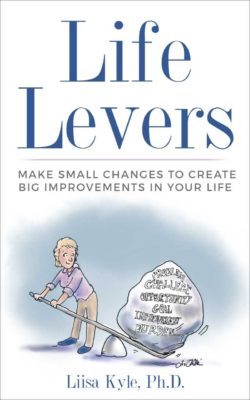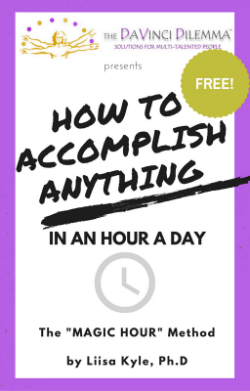
By Jared Tarbell (Flickr: sky puzzle) [CC BY 2.0 (https://creativecommons.org/licenses/by/2.0)], via Wikimedia Commons
When I plunked down at the table and I saw exactly what she was doing, my heart sank. The puzzle depicted a baseball game . . . and what remained to be done was the crowd. On the table were piles of hundreds of puzzle pieces depicting thousands of tiny little figures waving teeny little flags. Each piece looked pretty much identical.
“Are you insane,” I asked . “This is impossible!”
She laughed and, as if to counter my point, positioned together some matching pieces.
I was impressed. How was she doing this? I futzed around with a few pieces, going through the motions of making sense of the cardboard chaos before me.
Then I found a piece that fit. There was a quiet but satisfying “tshk’ as I pressed it into place. With this first, small victory, I was hooked. My friend and I kept going until about midnight, when the last cascade of pieces revealed their correct locations and the cardboard crowd materialized in front of us. We did it!
When I returned home from my visit, a surprise awaited me. Out of the blue, a different friend had mailed me a gift. You guessed it — a jigsaw puzzle. A beautiful Van Gogh pastoral scene, rendered in 1000 puzzle pieces. I couldn’t wait to begin. At the risk of sounding nerdy, it’s oddly satisfying to spend the evening listening to music and working on a jigsaw puzzle with my guy.
So why am I telling you all this? Because, to my surprise and delight, my newest hobby has elicited numerous insights to assist creative projects:
1. It make look daunting, but it’s not impossible. It can be done.
When you first dump 1000 puzzle pieces out of the box, it’s hard not to despair. Similarly, when you start a creative project it’s easy enough to get blown away by all there is to do. First and foremost, you have to believe that the project is do-able. It’s possible. You can do it.
2. Frame it first.
If you’re feeling overwhelmed — if you don’t know where or how to start with your creative project — begin by establishing some context. What, exactly, are you trying to accomplish? What’s the purpose of the project? What boundaries do you see? Just like you begin a puzzle by putting together the edge pieces to form the outer frame, you can sketch out the edges of your creative project so you let your imagination run rampant within this frame.
3. Aim to do the easiest bit first.
In puzzles as in creative projects, it really doesn’t matter where you start, so why not begin with whatever is easiest? Gather some low-lying fruit. Chalk up some easy successes. These intrinsic rewards will pump you up and motivate you to continue.
In fact, this is a pretty effective technique throughout the project: if in doubt, do what’s easiest. If you get stuck, do what’s easiest. There is absolutely no reason to make things more difficult for yourself. There are no extra points for being strict or harsh with yourself. The finished puzzle is the finished puzzle — why not get there the easiest way?
4. Have fun.
Have fun with the activity — enjoy it. Savor it. If you don’t enjoy jigsaw puzzles, you’re not going to do them. If you’re not enjoying your creative project, why continue? If it’s not fun for you, you won’t have enough energy or motivation to carry it out.
If your creative project feels like a burden, pause. Take stock. What’s going on? Have you hit a challenge that needs resolving? Brainstorm solutions with relevant, trusted others. Are you fatigued or tapped out of ideas? What can you do to replenish your creative energy? Are you bearing the weight of others’ scrutiny or some sense of competition? How can you reframe your efforts more positively?
5. Take breaks.
It’s unreasonable to expect to complete an entire 1000 piece jigsaw puzzle in one sitting. By the same token, your creative project might take a while. Break the work into manageable chunks — or better yet, baby steps.
Further, you’ll get more done if you punctuate any extended work session with healthy, brief breaks.
6. Ask for help.
In puzzles and in creative projects, you don’t have to do the whole thing all by your lonesome. Gather together the support you need. Ask for specific help.
7. Keep going.
Persist. Keep chipping away at your project — or your puzzle — until you’re done.
8. Finish well.
As your creative project concludes, it can be exciting. There may be a flurry of activity and emotions as the last few pieces come together. Enjoy it! Savor it! Celebrate it! Revel in your accomplishment a while.
*****
Activity: Think about a favorite hobby or past-time. What do you love about it? How does this activity enhance or give you insights into your creative project(s)?
***
 Check out my book YOU CAN GET IT DONE: Choose What to do, Plan, Start, Stay on Track, Overcome Obstacles, and Finish
Check out my book YOU CAN GET IT DONE: Choose What to do, Plan, Start, Stay on Track, Overcome Obstacles, and Finish
Available here in paperback and eBook format: http://bit.ly/YouCanGetItDone
***
Want to re-publish this article? Go for it – just include the author’s name, a link to this original post and the following text blurb:
Are you struggling with too many talents, skills, ideas? You may have The DaVinci Dilemma™! Find tools, fun quizzes, coaching, inspiration and solutions for multi-talented people at http://www.davincidilemma.com/ .



